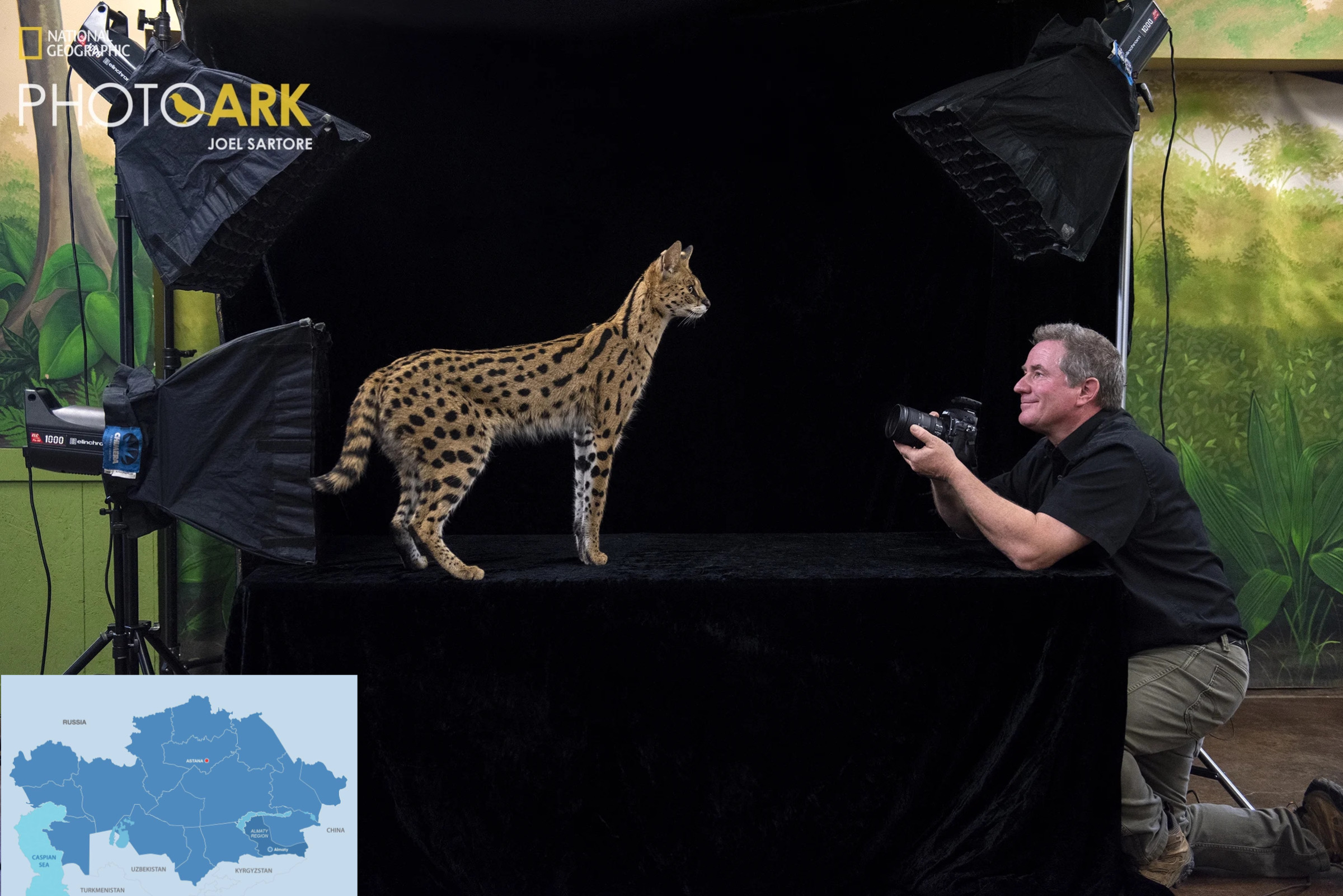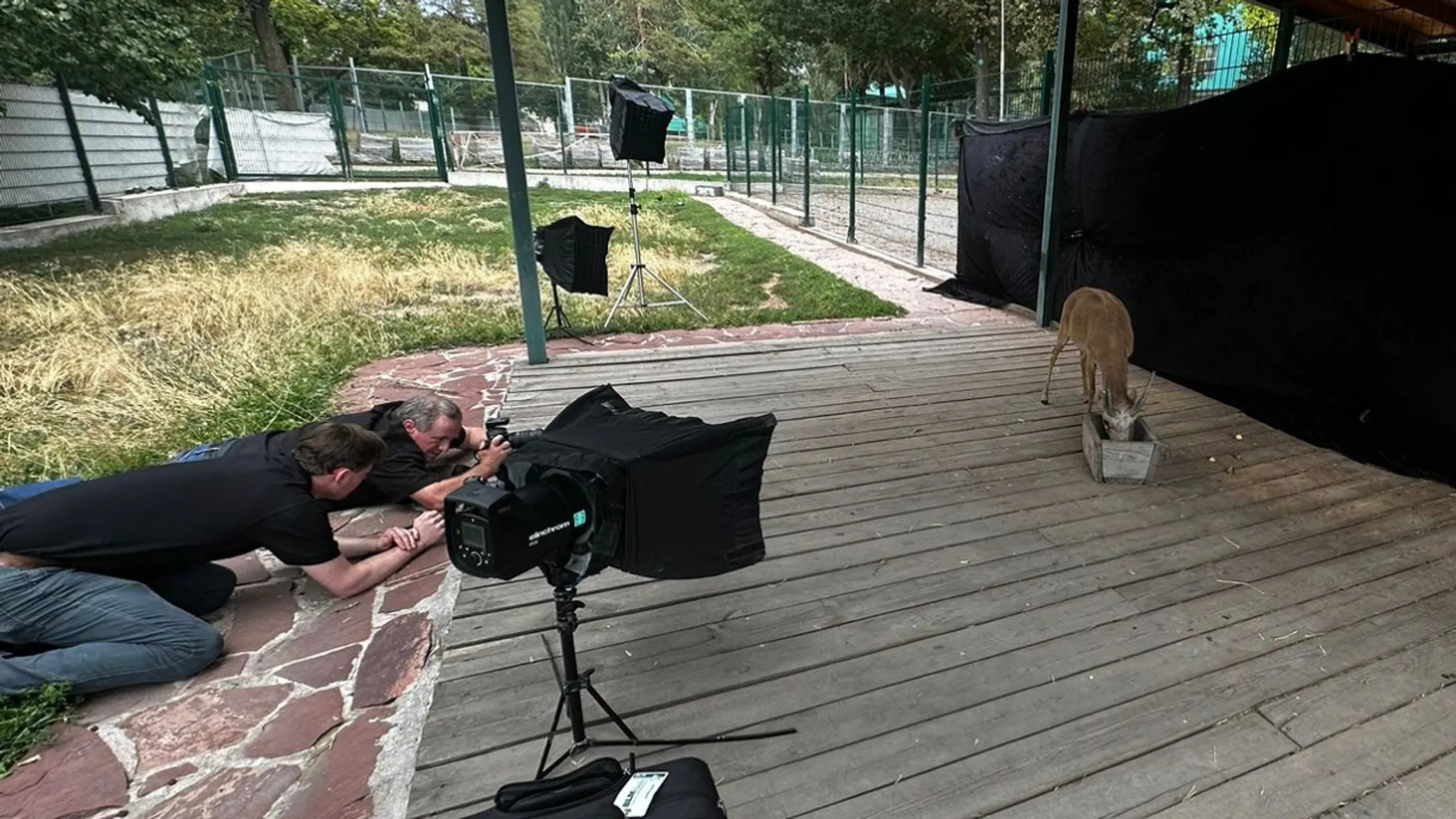ASTANA — Joel Sartore, a naturalist photographer and a long-time contributor to National Geographic, visited Almaty Zoo as part of a groundbreaking initiative, the Photo Ark project, which aims to shed light on endangered species worldwide, reported QazMonitor.

Photo credit: National Geographic. Click to see the map in full size. The map is designed by The Astana Times.
Sartore spent three days at Almaty Zoo, which breeds saiga antelopes and other species native to the Mongolian Steppe. With his long-standing association with National Geographic, Sartore embarked on a mission to capture the essence of the animal kingdom.
“I’ve come to Almaty to photograph the saiga antelope, Himalayan snowcock, and other species that are native to the Mongolian Steppe. The zoo here has many animals that are from this part of the world. I’ve never been here and so it’s a great place to work for the Photo Ark,” Sartore said.
The Photo Ark project is an educational and inspirational endeavor aiming to garner support for conservation efforts that safeguard wildlife. Initiated in 2001, Sartore’s photographic journey spans 25 years, seeking to document every species under human care. Through his lens, he captures not only the physical attributes of these animals but also their individual spirit, fostering a connection between the audience and the animal world.

Photo credit: Joel Sartore/Photo Ark/National Geographic.
The impact of the project is palpable. The deliberate absence of size reference in Sartore’s portraits is thought-provoking, emphasizing the equal importance of all species, irrespective of their size.
“Without any size comparison, all these animals are the same. They’re all equal. So a mouse is every bit as large and important as an elephant in these portraits,” said the photographer.

Photo credit: Almaty Zoo.
This distinctive photographic approach, characterized by black-and-white backgrounds and studio lighting, serves a dual purpose. It showcases the animals’ natural colors while removing distractions, enabling viewers to connect visually and emotionally with them.
By bringing these animals to the forefront and narrating their stories through his lens, the project continues to raise awareness and inspire action toward a world where these species can thrive.
The article was initially published in QazMonitor.


